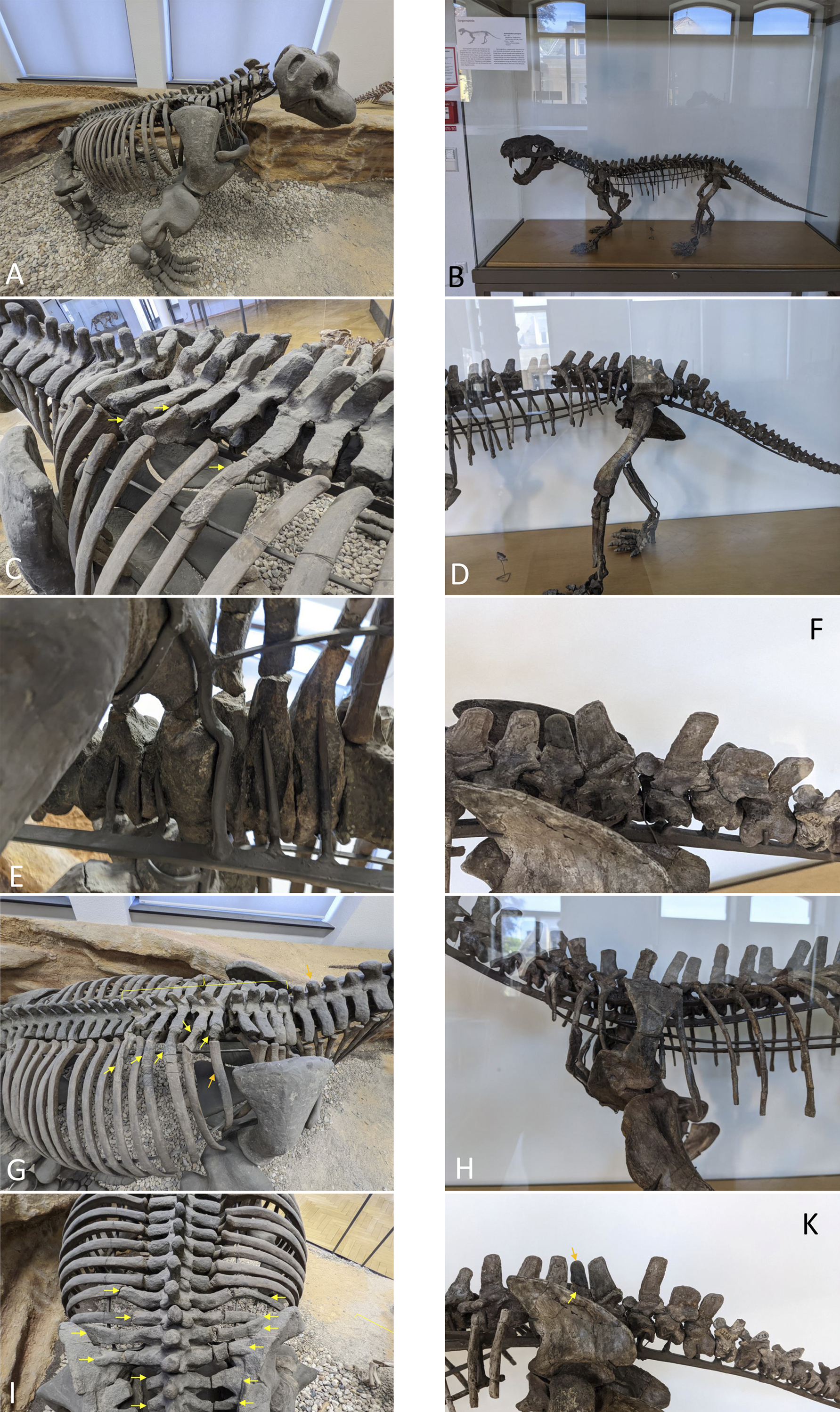
|
||
|
Keratocephalus moloch (GPIT-PV-31461) and Sauroctonus parringtoni (GPIT-PV-31579). A Overview over the mounted skeleton of Keratocephalus moloch on display. C Left side, cervical and cranial dorsal vertebral column. E Sacrum from lateroventral. Yellow arrows mark fossil vertebrae and ribs; curly bracket marks preserved dorsal vertebrae; orange arrows mark exemplaric for one rib and vertebra the added parts made of plaster. G Right side, cervical and cranial dorsal vertebral column. I Caudal dorsal vertebral column and sacrum. B Overview over the mounted skeleton of Sauroctonus parringtoni on display. D Caudal dorsal and caudal vertebral column. F Sacrum. Curly bracket marks the added vertebra of the tail. yellow and orange arrow mark exemplaric the original fossil material and the added plaster. Overall more caudal ribs consist of less fossil and more artificial material. H Cervical and cranial dorsal vertebral column. K Close-up of the sacral region and the cranial caudal vertebrae. |